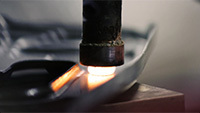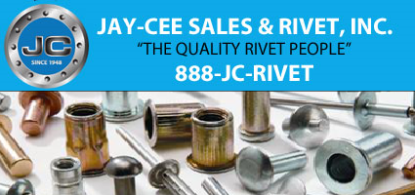热锻
The hot upset forming and hot upset riveting process uses heat and pressure to form the fastener. The material being formed becomes malleable and collapses under pressure applied by the powerhead. With the hot upset riveting or forming process it is possible to form a round fastener into a square hole creating a high torque joint, form hardened parts, and create joints resistant to vibration related fatigue.

- 型号
- Hot Upset

Hot upset riveting is a permanent part assembly process that combines electrical current with pressure and time to compress and expand a boss or rivet to a desired diameter and shape. Generally, hot upset riveting is applied when there are special circumstances such as hardened materials being formed, a requirement to accomplish maximum hole fill, or when it is critical to provide resistance to vibration related fatigue.
What is Hot Upset Riveting?
Hot upset riveting is a permanent part assembly process that combines electrical current with pressure and time to compress and expand a boss or rivet to a desired diameter and shape. Orbitform integrates standard Orbitform powerheads to act as the pressing method which eliminates the need for an external air/oil tank and intensification valve. A simple bench machine version may be built but other design features may be incorporated as well to create a custom hot upset machine able to monitor and control the assembly process.
Why is Hot Upset Riveting important?
Hot upset riveting is important because there exist special product assembly applications where traditional riveting methods are unable to achieve the final form characteristics required. The heating and pressing methods introduced by hot upset riveting allow for hardened materials to be formed and for high torque joints to be assembled.
How does Hot Upset Riveting help?
Hot upset riveting helps your product assembly process by allowing extremely hardened rivets and post materials to be formed with a much smaller machine than would be required with a traditional pressing operation alone. The hot upset riveting process also helps provide greater hole fill, increased push out force, and overall tighter joints due to material contraction during cooling. The increased hole fill achieved through hot upset riveting provides one of the most solid fastening methods possible.
Examples of Where Hot Upset Riveting is used?
There are several examples of where hot upset riveting is used:
- When hardened materials such as titanium, M2, or molybdenum are to be formed
- When high push / pull force joints are required by the product design
- When resistance to fatigue by vibration is essential for assembly success
- When a round fastener is to be formed into a square hole, or vice versa




